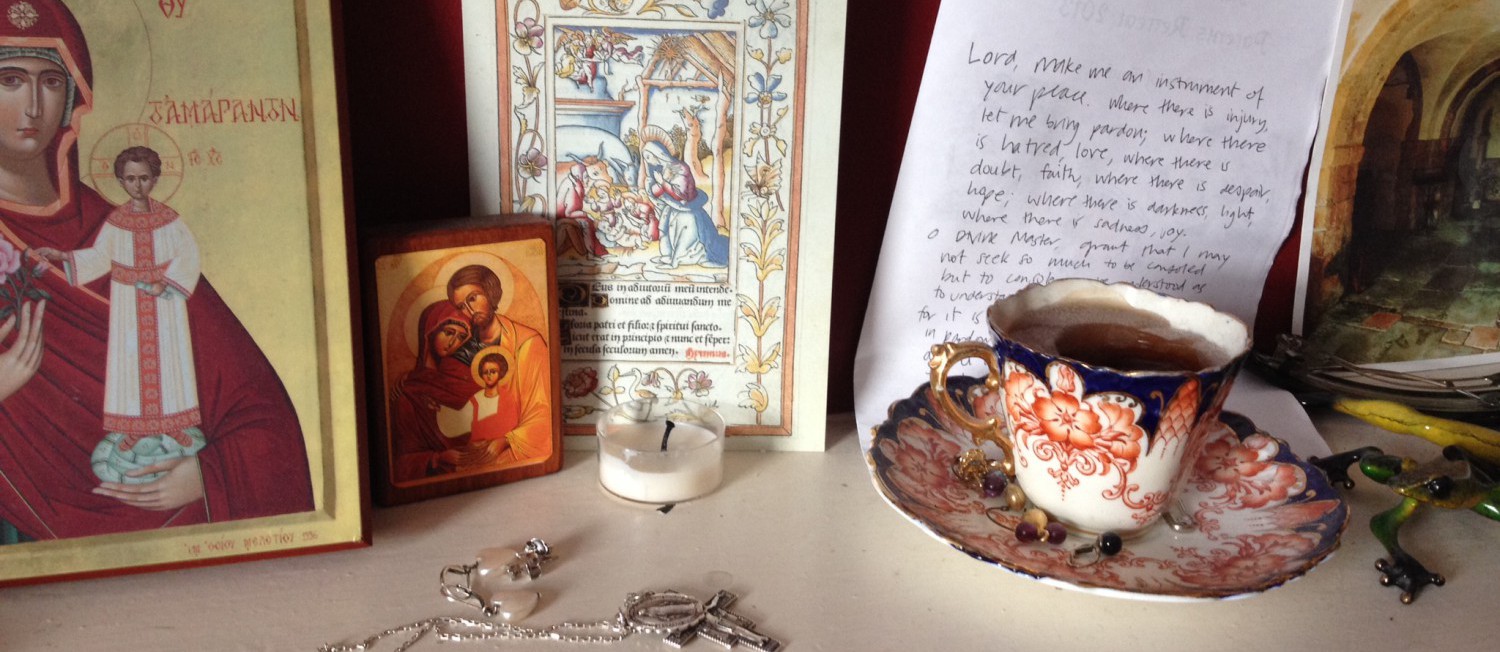At the far right of the image above, a corner of a postcard is just visible, showing a bit of stone floor. Not just any stone floor, though: the floor of the Lady Chapel at Minster Abbey. I’d never heard of ‘thin places’ before the first time I went to Minster, but it is thin all over, and the Lady Chapel particularly so.
I always knew I would appreciate Benedictine spirituality. Before I had ever visited a monastery, I thought one day I would want to be an oblate. (Still hasn’t happened yet.) Nothing I imagined even came close to the reality of being there. The train journey from my home in the north of England takes about 5 hours and involves at least 2 changes, one of which happens in London (between Kings Cross and St Pancras). So when I arrived in Minster the first time, I felt like I was a long way from home (especially because the journey took a couple of extra finding-my-way hours).
And so I was: a long way from anything I had ever experienced before. The daily office–the rhythm of Benedictine prayer–was new to me. Nuns were new to me. Yet somehow the place felt like home almost immediately. Because I was on an individual retreat, I had no schedule other than the appointed times for prayer, and no ‘input’ apart from the daily office and Mass. In my little room, there was a Bible and a small copy of the Rule of Benedict.
Little did I know that reading Benedict’s Rule would change my life as much as anything ever has. That weekend, I was a woman adrift, looking for a spiritual beacon. That little book–hardly more than a pamphlet–convinced me that the spiritual life was for me. Not that I really doubted; it’s just that I had wondered since college whether I would ever recover the sense of purpose that I had as a member of an evangelical (and I mean that in the telling-people-about-Jesus sense, not the Christian brand-name sense) community. Being a mother of (then) three children and holding down a job as a lecturer didn’t leave much time for the intensive Bible study or hour-long quiet times I’d had all those years ago. But that was when it all seemed so vibrant and essential.
Benedict’s Rule is for monastic communities, true. But it is about how daily life is spiritual, and how to live it in a way that makes each seemingly insignificant task an act of Christian discipleship. That weekend, I learned a Latin phrase: ‘fratres non contristet.’ It comes from the instructions to the cellarer. If a brother comes to you with an unreasonable request, Benedict counsels, refuse him gently, so as not to upset (contristet) the brethren (fratres). Being a mother involves refusing countless unreasonable demands on a daily basis, at least in my house. The challenge was, and is, to make every response–yes, no, or maybe–an act of love.
That is what Benedict taught me that weekend: fratres non contristet. Every time I go into the Lady Chapel at Minster, I recommit myself to the goal of gentleness in daily life. Even with those words in large letters on my refrigerator, I forget. I forget that discipleship happens in the little things, as we do them with love. I forget that Jesus taught us more on the cross than in all the words he said. I love that saying floating around the internet at the moment: ‘if you have to chose between being right and being kind, be kind.’ Indeed. That is, to me, what gentleness is all about. But it is a lot harder than it seems! So back to the monastery I go, to find myself again in the Lady Chapel, to be in peace and grace and regulated quiet long enough to accept the fact that I have to begin again.
fratres non contristet.
